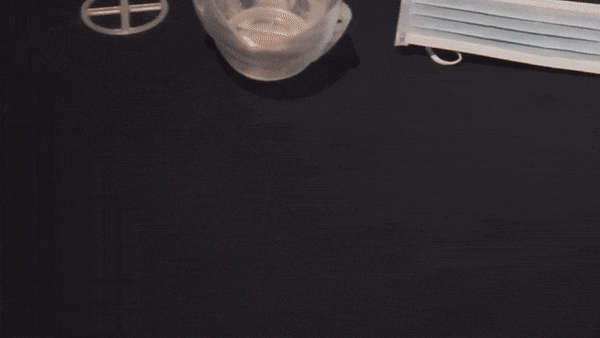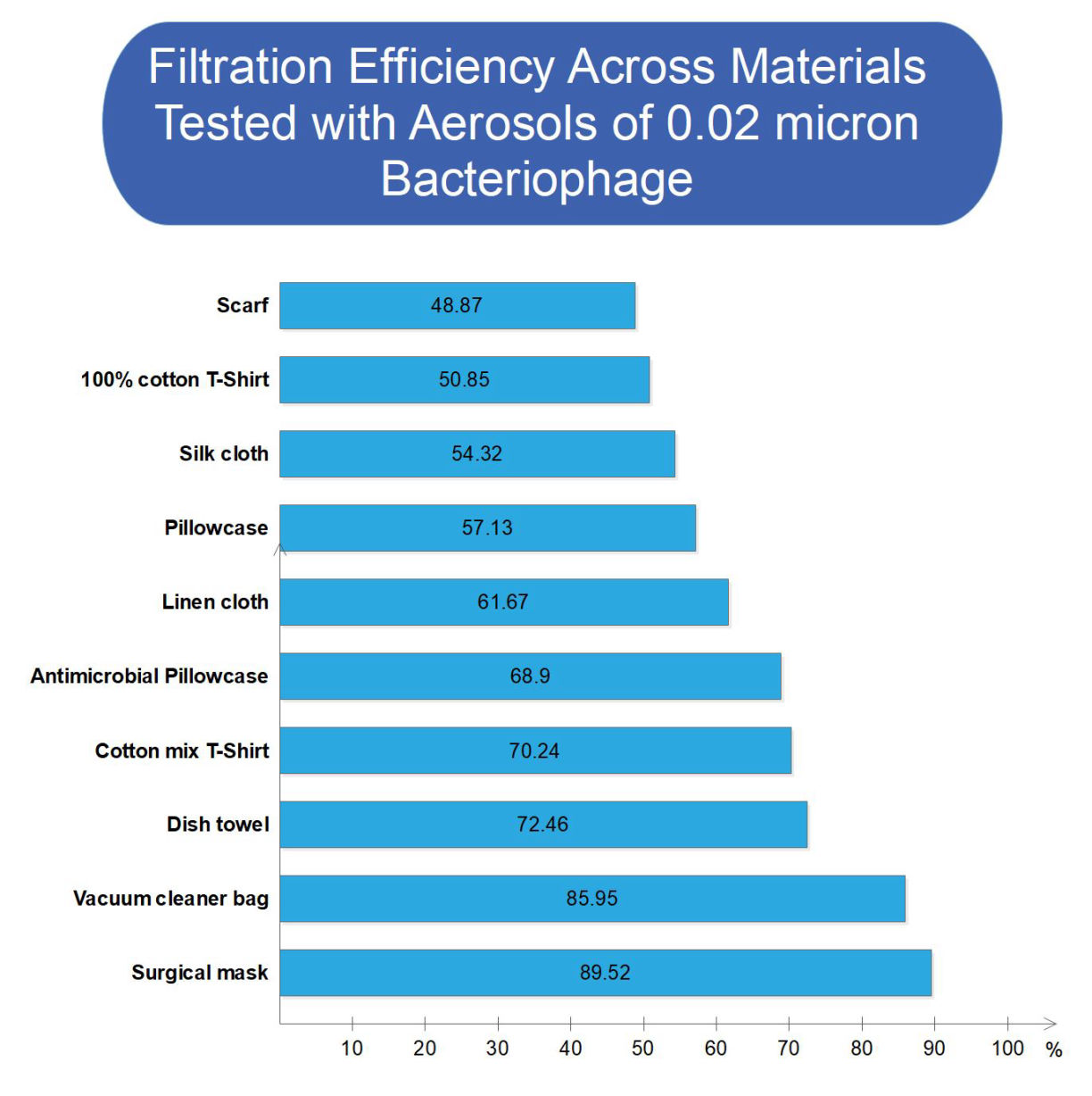Attention: Please do not use vacuum cleaner bags, these may contain antibacterial powders that can damage the lung!
However, the study also points out that not every material is suitable for long periods of wear because it makes breathing very difficult. If you want to breathe a little better than through a surgical mask, a T-shirt (100% cotton) or a pillowcase should be used. If you want to achieve a little more protection and accept the somewhat more difficult breathing, a T-shirt (cotton blend) or an antimicrobial pillowcase is recommended. Tea towels and vacuum cleaner bags are not recommended due to their very limited breathing capacity.


